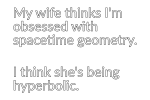Dragan Glas
Well-Known Member
Greetings,
New Evidence for Controversial Theory That the Electron Is Composed of Two Particles
Black Hole Spin Discovery Could Shed Light on General Relativity and the Lifespan of Stars
Warp Drives and Negative Energy: Physicists Give Chances of Faster-Than-Light Space Travel a Boost
Kindest regards,
James
New Evidence for Controversial Theory That the Electron Is Composed of Two Particles
Black Hole Spin Discovery Could Shed Light on General Relativity and the Lifespan of Stars
Warp Drives and Negative Energy: Physicists Give Chances of Faster-Than-Light Space Travel a Boost
Kindest regards,
James



